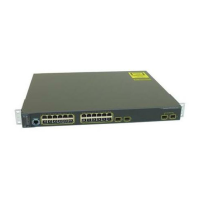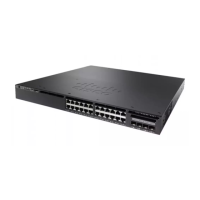The current standard solutions for ISM service are PIM-SM and MSDP. Rendezvous point (RP) management
in PIM-SM (including the necessity for Auto-RP or BSR) and MSDP is required only for the network to learn
about active sources. This management is not necessary in SSM, which makes SSM easier than ISM to install
and manage, and therefore easier than ISM to operationally scale in deployment. Another factor that contributes
to the ease of installation of SSM is the fact that it can leverage preexisting PIM-SM networks and requires
only the upgrade of last hop routers to support IGMPv3, IGMP v3lite, or URD.
Ideal for Internet Broadcast Applications
The three benefits previously described make SSM ideal for Internet broadcast-style applications for the
following reasons:
•
The ability to provide Internet broadcast services through SSM without the need for unique IP multicast
addresses allows content providers to easily offer their service (IP multicast address allocation has been
a serious problem for content providers in the past).
•
The prevention against DoS attacks is an important factor for Internet broadcast services because, with
their exposure to a large number of receivers, they are the most common targets for such attacks.
•
The ease of installation and operation of SSM makes it ideal for network operators, especially in those
cases where content needs to be forwarded between multiple independent PIM domains (because there
is no need to manage MSDP for SSM between PIM domains).
SSM Mapping Overview
SSM mapping supports SSM transition when supporting SSM on the end system is impossible or unwanted
due to administrative or technical reasons. Using SSM to deliver live streaming video to legacy STBs that do
not support IGMPv3 or for applications that do not use the IGMPv3 host stack is a typical application of SSM
mapping.
In a typical STB deployment, each TV channel uses one separate IP multicast group and has one active server
host sending the TV channel. A single server may of course send multiple TV channels, but each to a different
group. In this network environment, if a router receives an IGMPv1 or IGMPv2 membership report for a
particular group G, the report implicitly addresses the well-known TV server for the TV channel associated
with the multicast group.
SSM mapping introduces a means for the last hop router to discover sources sending to groups. When SSM
mapping is configured, if a router receives an IGMPv1 or IGMPv2 membership report for a particular group
G, the router translates this report into one or more (S, G) channel memberships for the well-known sources
associated with this group.
Note
When the router receives an IGMPv1 or IGMPv2 membership report for group G, the router uses SSM mapping
to determine one or more source IP addresses for group G. SSM mapping then translates the membership
report as an IGMPv3 report INCLUDE (G, [S1, G], [S2, G]...[Sn, G] and continues as if it had received an
IGMPv3 report. The router then sends out PIM joins toward (S1, G) to (Sn, G) and continues to be joined to
these groups as long as it continues to receive the IGMPv1 or IGMPv2 membership reports and as long as it
continues to receive the IGMPv1 or IGMPv2 membership reports, and the SSM mapping for the group remains
the same. SSM mapping, thus, enables you to leverage SSM for video delivery to legacy STBs that do not
support IGMPv3 or for applications that do not take advantage of the IGMPv3 host stack.
IP Multicast Routing Configuration Guide, Cisco IOS XE Release 3.6E (Catalyst 3850 Switches)
264 OL-32598-01
Configuring SSM
SSM Mapping Overview
